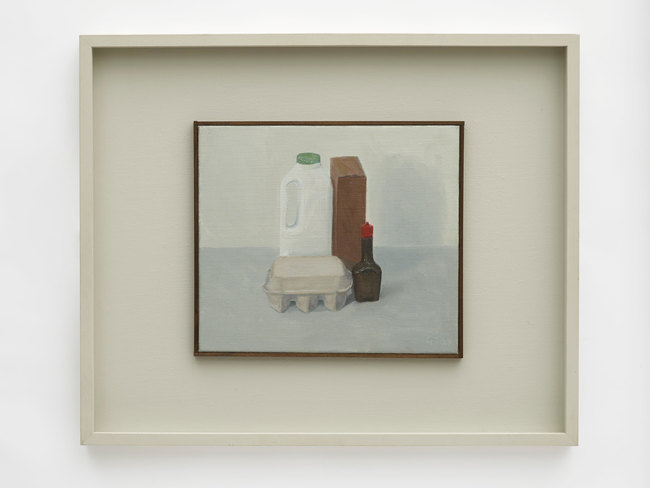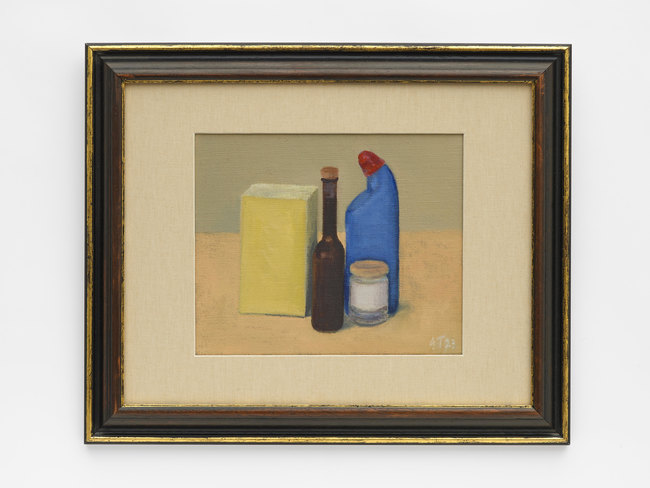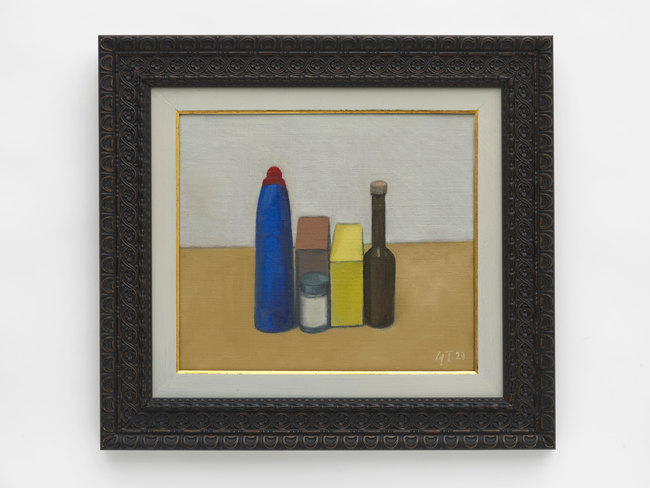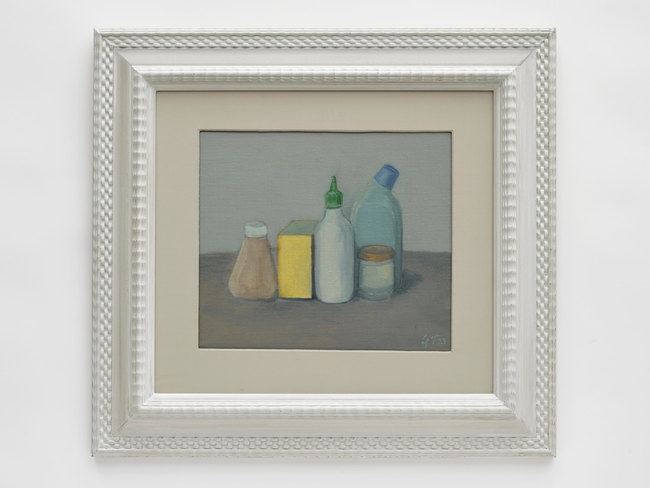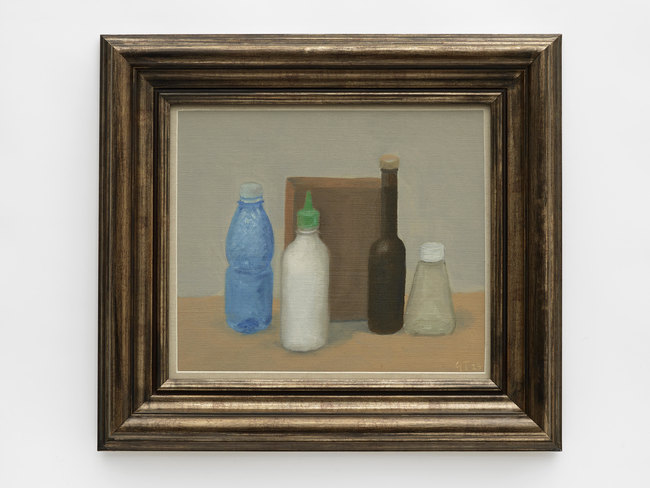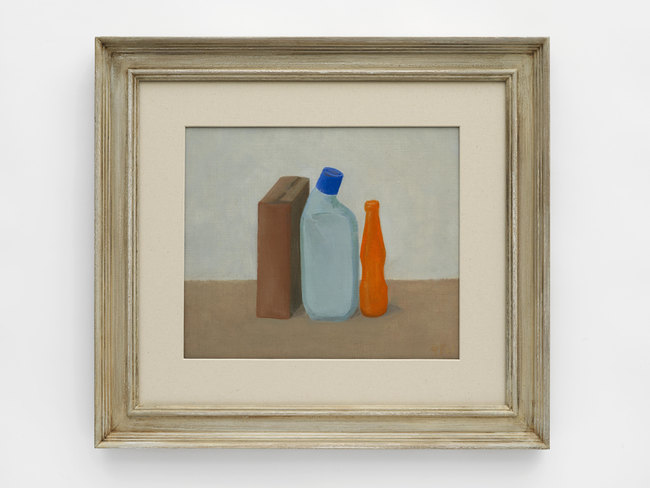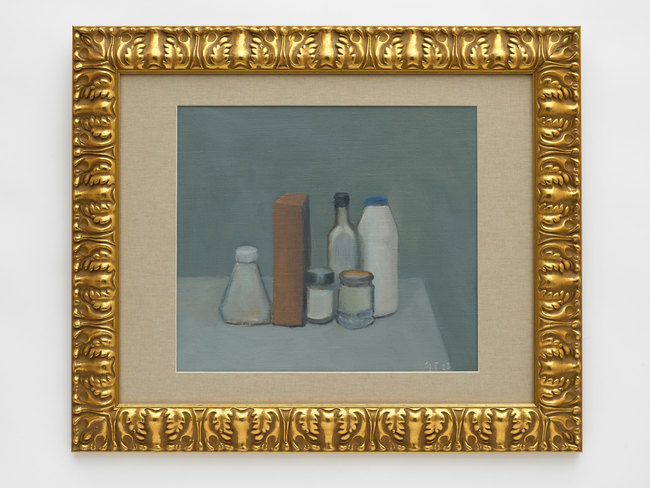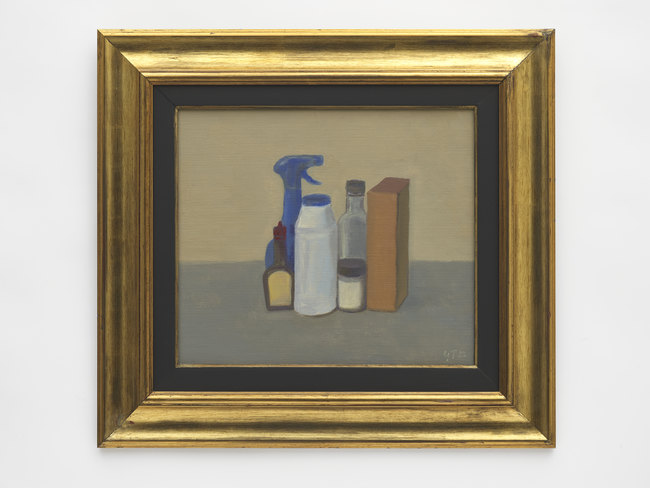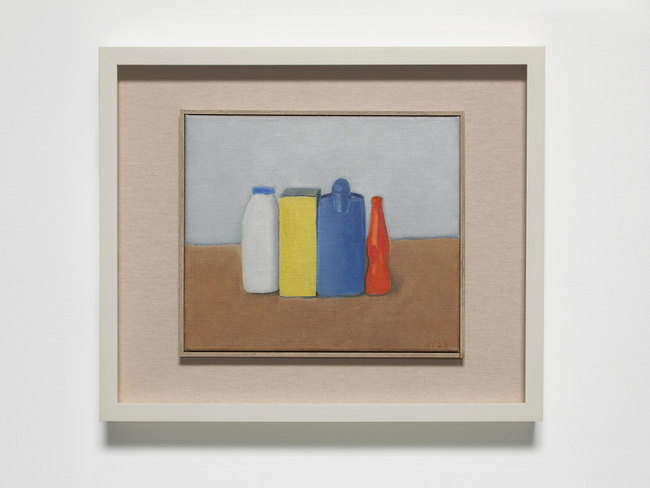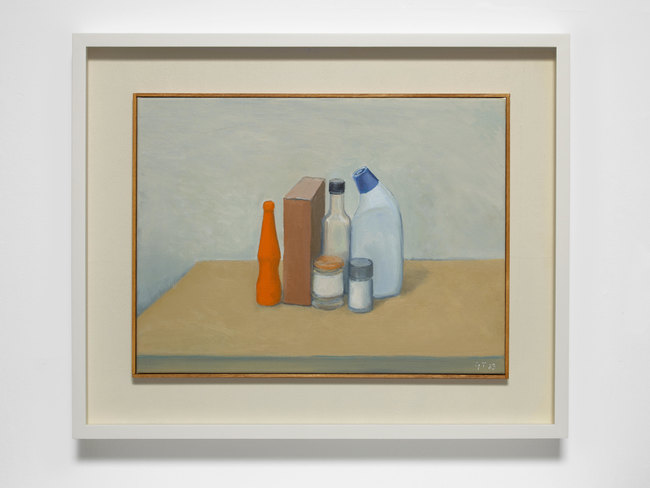Exhibitions2023Still Life
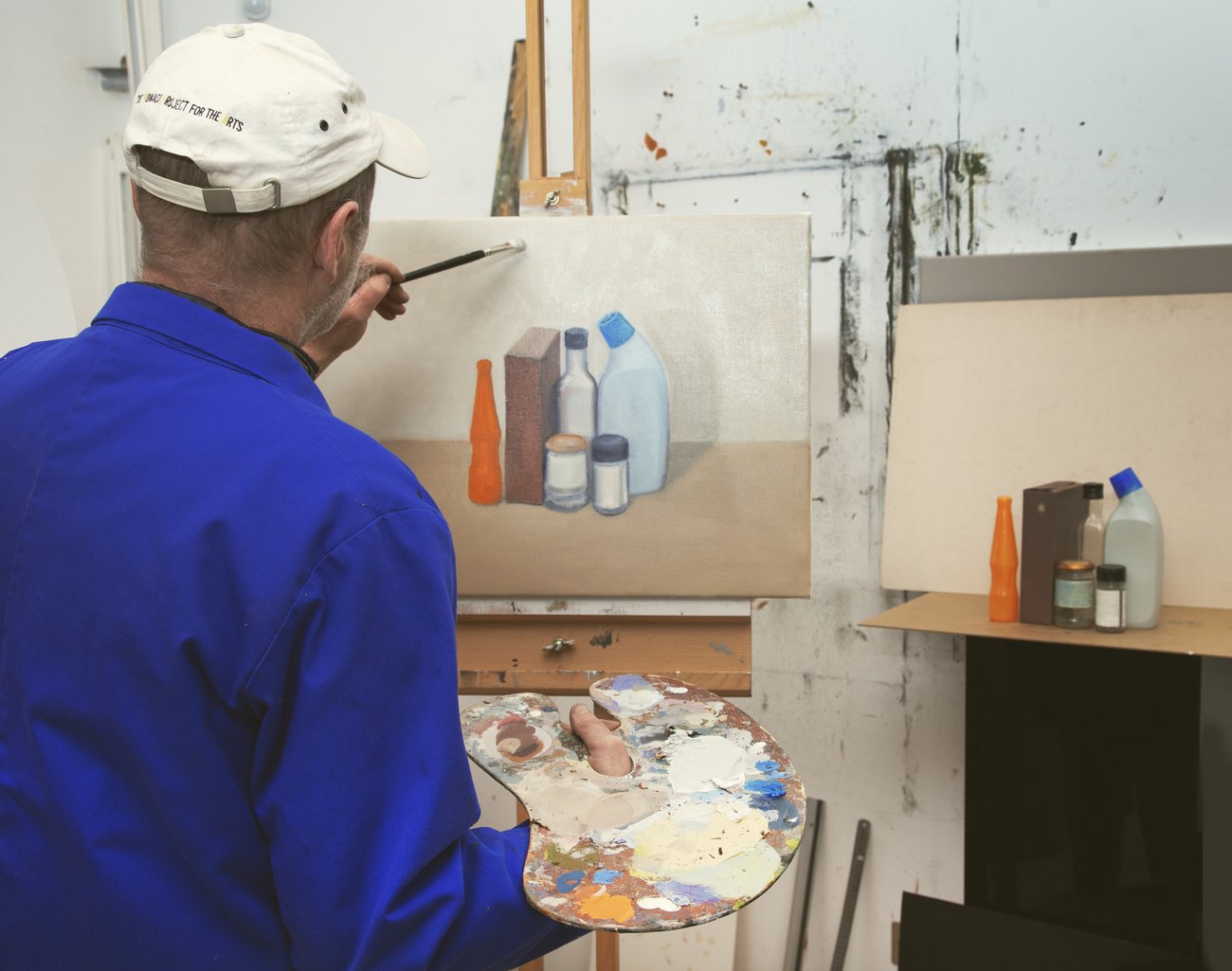
Still Life
23 Dec 23 - 21 Jan 24
MARUANI MERCIER - Knokke Zeedijk
MARUANI MERCIER is pleased to present Still Life, an exhibition of a new series of paintings by Gavin Turk, on view at the Knokke Zeedijk gallery. In Still Life, Turk carefully paints images of product packaging arranged in a way that recalls the work of the artist Giorgio Morandi. Each work is uniquely framed, creating an impression that each work has had its own journey and has been brought back together for this exhibition. Conflating the slow and layered painterly process of classical still life with images of disposable objects, the works highlight the ever-accelerating pace of consumption in the present-day economy.
“It’s a kind of proto-realistic method that includes images of not only what we throw away but a genre of painting.” - GT
The paintings are executed in a restricted tonal palette against a monochrome ground, some of the objects are highlighted in accents of colour, inviting a close study of rhythmically arranged lines and forms. Empty bottles in glass and plastic, reflect the hues of nearby objects, simultaneously alluding to the shortness of their shelf-life. Foregrounding empty containers as classical still-life models, Turk addresses the awkward invisibility of these items, designed to be discarded and ultimately devoid of tangible value to the consumer in a culture driven by convenience. Stripped of labels or branding, the quotidian nature of the shapes is nevertheless obvious in artwork titles which list all products employed in the composition in a kind of diaristic fashion. Indeed, all the products featured in the series were used by the artist or his friends and family, suggesting an unexpected role of food containers as traces of one’s presence over time.
Presenting a considerable variance in shapes, the objects in the paintings emerge as relics of our material culture. Designed to evoke a specific psychic response, such as desire or trust in the product, images of packaging here summon a reflection on the nature and repercussions of our day-to-day consumer choices. This exploration of pathos and nostalgia serves as a reminder that in the detritus of our disposable culture, there exists an elusive meaning that can unlock the clues to what we might wish to take forward into our future.
